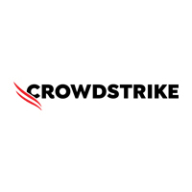

CrowdStrike Falcon and Microsoft Defender for Cloud compete in the cybersecurity category. CrowdStrike Falcon holds the upper hand with its impressive real-time response and seamless integration, despite more expensive pricing than Microsoft Defender for Cloud, which offers modular pricing and strong cloud environment benefits.
Features: CrowdStrike Falcon provides endpoint visibility, comprehensive EDR capabilities, and real-time response. Its cloud-based protection and automated alert features stand out, as well as its proactive threat hunting. Microsoft Defender for Cloud excels in regulatory compliance and security scores, which are particularly beneficial for multi-cloud environments. Its strong threat intelligence and recommendations enhance security postures.
Room for Improvement: CrowdStrike Falcon could improve integration with non-supported or legacy systems and enhance its dashboard for better customization options. Enhancements in email security and file scanning are also needed. Microsoft Defender for Cloud could benefit from a more intuitive UI, improved documentation, and reduced false positives while enhancing third-party integration.
Ease of Deployment and Customer Service: CrowdStrike Falcon is recognized for seamless cloud deployment and comprehensive customer support, although technical support response times may vary. Microsoft Defender for Cloud offers robust technical support and hybrid deployment capabilities, though its complexity might challenge some users due to its extensive offerings.
Pricing and ROI: CrowdStrike Falcon is known for its higher cost, particularly for smaller businesses, reflecting its robust features and good ROI by reducing operational costs and improving productivity. Microsoft Defender for Cloud, with competitive enterprise pricing, offers modular pricing that allows cost-effective scaling. Its comprehensive security and compliance benefits ensure substantial ROI through improved security postures.
CrowdStrike Falcon saves time and offers good value for money, especially for enterprise companies, because it can stop breaches.
It's very easy to deploy without many IT admins, saving time.
Defender proactively indexes and analyzes documents, identifying potential threats even when inactive, enhancing preventative security.
Identifying potential vulnerabilities has helped us avoid costly data losses.
The biggest return on investment is the rapid improvement of security posture.
On a scale of one to ten, I would rate the technical support as a 10 because they resolve many issues for us.
The CrowdStrike team is very efficient; I would rate them ten out of ten.
They could improve by initiating calls for high-priority cases instead of just opening tickets.
Since security is critical, we prefer a quicker response time.
The support team was very responsive to queries.
They understand their product, but much like us, they struggle with the finer details, especially with new features.
It has adequate coverage and is easy to deploy.
In terms of scalability, I find CrowdStrike to be stable, and I have not encountered any limitations with it.
There's no scalability limitation from CrowdStrike itself, as it just requires agent deployment.
We are using infrastructure as a code, so we do not have any scalability issues with Microsoft Defender for Cloud implementation because our cloud automatically does it.
It has multiple licenses and features, covering infrastructures from a hundred to five hundred virtual machines, without any issues.
Defender won't replace our endpoint XDR, but it will likely adapt and support any growth in the Microsoft Cloud space.
I have never seen instability in the CrowdStrike tool.
We are following N-1 versions across our environment, which is stable.
The biggest issue occurred when every computer worldwide experienced a blue screen.
Defender's stability has been flawless for us.
Microsoft Defender for Cloud is very stable.
Microsoft sometimes changes settings or configurations without transparency.
Simplifying the querying process, such as using double quote queries or directly obtaining logs based on IP addresses or usernames, would be beneficial.
Another concern is CrowdStrike's GUI. It changes annually, making it hard to work and find options.
Threat prevention should be their first priority.
Microsoft, in general, could significantly improve its communication and support.
It would be beneficial to streamline recommendations to avoid unnecessary alerts and to refine the severity of alerts based on specific environments or environmental attributes.
The artificial intelligence features could be expanded to allow the system to autonomously manage security issues without needing intervention from admins.
It is expensive compared to SentinelOne, but as the market leader, it is worth it.
The licensing cost and setup costs are affordable.
The solution is a bit expensive.
Every time we consider expanding usage, we carefully evaluate the necessity due to cost concerns.
We appreciate the licensing approach based on employee count rather than a big enterprise license.
Microsoft Defender for Cloud is pricey, especially for Kubernetes clusters.
I can investigate by accessing the customer's host based on the RTR environment and utilize host search to know details for the past seven days, including logins, processes, file installations, malicious processes, and network connections.
The real-time analytics aspect of CrowdStrike performs well because we get all logs in real-time, with no delay, allowing us to take action immediately.
Being an EDR solution, it helps us identify attacks in real-time.
The most valuable feature for me is the variety of APIs available.
This feature significantly aids in threat detection and enhances the user experience by streamlining security management.
The most valuable feature is the recommendations provided on how to improve security.
| Product | Market Share (%) |
|---|---|
| CrowdStrike Falcon | 12.3% |
| Wazuh | 10.2% |
| Darktrace | 8.0% |
| Other | 69.5% |
| Product | Market Share (%) |
|---|---|
| Microsoft Defender for Cloud | 14.8% |
| Wiz | 15.9% |
| AWS GuardDuty | 13.2% |
| Other | 56.099999999999994% |


| Company Size | Count |
|---|---|
| Small Business | 46 |
| Midsize Enterprise | 34 |
| Large Enterprise | 61 |
| Company Size | Count |
|---|---|
| Small Business | 26 |
| Midsize Enterprise | 7 |
| Large Enterprise | 45 |
CrowdStrike Falcon offers comprehensive endpoint protection with real-time threat detection, AI-driven capabilities, and seamless integration with other platforms. Its cloud-native design provides robust security across diverse environments, making it a reliable choice for modern cybersecurity needs.
CrowdStrike Falcon is heralded for features like robust endpoint visibility, threat detection, and AI-driven capabilities. Users value its efficient real-time monitoring, which maintains low impact on performance while offering seamless integration with platforms. The lightweight design, coupled with comprehensive dashboards and automated threat responses, enhances security operations while reducing resource strain. CrowdStrike's cloud-native architecture ensures flexible, always-on protection, making it adaptable to a wide range of environments. However, improvements can be made in log management, compatibility with diverse operating systems, and integration with third-party technologies. Users also seek more robust reporting features, fewer false positives, and better support for legacy systems. Enhanced policy application, AI capabilities, and extended on-demand scanning are desired, while pricing and technical support responsiveness are concerns.
What are CrowdStrike Falcon's key features?CrowdStrike Falcon is implemented widely in industries relying on robust endpoint protection for monitoring, securing endpoints, forensic analysis, and malware detection. Its cloud-based AI capabilities ensure comprehensive security across devices, making it a preferred choice for networks, servers, and workstations globally. The efficient management of security threats and compliance with regulations is achieved with minimal resource consumption.
Microsoft Defender for Cloud is a comprehensive security solution that provides advanced threat protection for cloud workloads. It offers real-time visibility into the security posture of cloud environments, enabling organizations to quickly identify and respond to potential threats. With its advanced machine learning capabilities, Microsoft Defender for Cloud can detect and block sophisticated attacks, including zero-day exploits and fileless malware.
The solution also provides automated remediation capabilities, allowing security teams to quickly and easily respond to security incidents. With Microsoft Defender for Cloud, organizations can ensure the security and compliance of their cloud workloads, while reducing the burden on their security teams.
We monitor all Extended Detection and Response (XDR) reviews to prevent fraudulent reviews and keep review quality high. We do not post reviews by company employees or direct competitors. We validate each review for authenticity via cross-reference with LinkedIn, and personal follow-up with the reviewer when necessary.